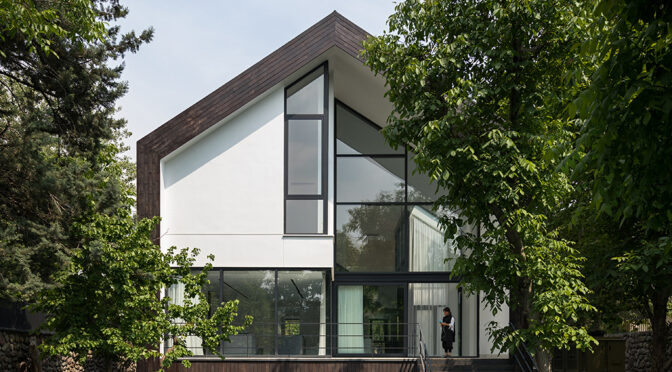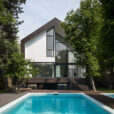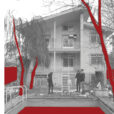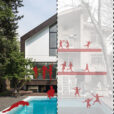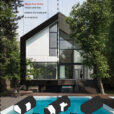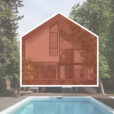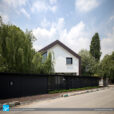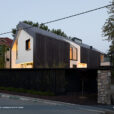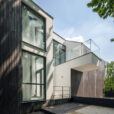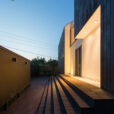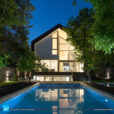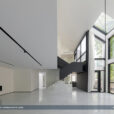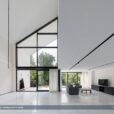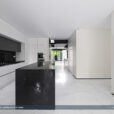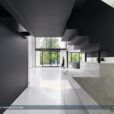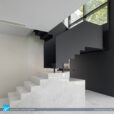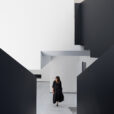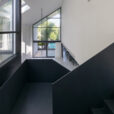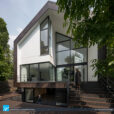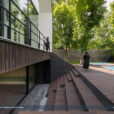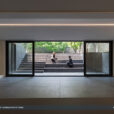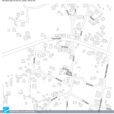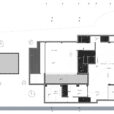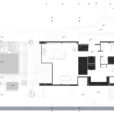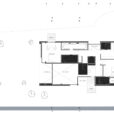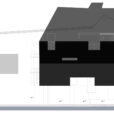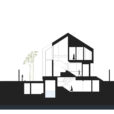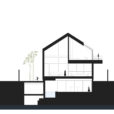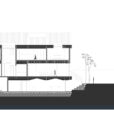ویلای آشیانه
استودیو ارش بعد چهارم فضا (علیرضا شرافتی، پانتهآ اسلامی، شبنم آزموده)
موقعیت: لواسان، تهران، ایران
تاریخ: ۱۴۰۰
مساحت: ۷۲۰ مترمربع
وضعیت: ساختهشده
کارفرما: بخش خصوصی
تیم طراحی: راضیه شعاعی، نگار سعادت، شیوا سبزواری، حامد ناجی
سازه: علی شیخی
تاسیسات مکانیکی: علی غنیزاده
تاسیسات الکتریکی: علی پیلتن
اجرا: استودیو طراحی راهرو
گرافیک: مهسا شبستانیپور
عکس: محمدحسن اتفاق
تهران شهری شلوغ و متراکم است، و در برخی ساعات، یک رفتوآمد ساده ممکن است تا یک ساعت طول بکشد. از اینرو، بسیاری از مردم ترجیح میدهند در حومه شهر زندگی کنند، و لواسان که در گذشته، روستای کوچکی در شمالشرق تهران بود، اکنون یکی از مناطق مرتفع حومه تهران است که به دلیل آبوهوای عالی و ویلاهای مجللش شهرت دارد.
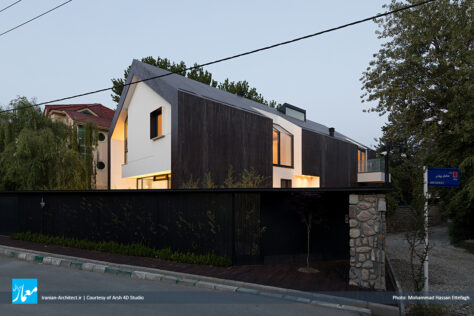
ویلای آشیانه متعلق به زوج جوانی است که لواسان را برای سکونت دائم انتخاب کردند و تصمیم گرفتند خانه آخرهفته والدینشان را به ویلایی مدرن تبدیل کنند. با توجه به اینکه این خانواده در چند دهه گذشته، آخرهفتهها از این خانه استفاده میکردند، مفاهیمی همچون دلبستگی به مکان و خاطره نقش مهمی در روند طراحی داشتند، و حفظ عناصر مهم عاطفی، از سنگ جداره حیاط گرفته تا درختان کهنسال و استخر مرکزی، اولویت اصلی تیم طراحی بود. از اینرو، در طراحی خانه جدید، عمدا دستخط کلی خانه آخرهفته قدیمی، هم در پلان و هم در مقطع دنبال شده است.
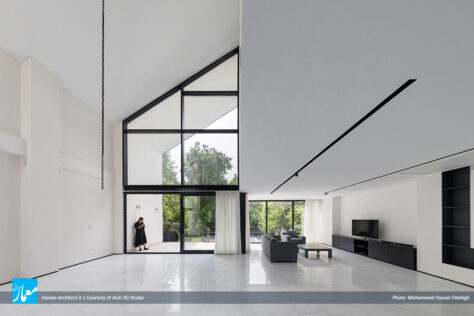
در خانه جدید، همانند گذشته، استخر مرکزی به عنوان یک نقطه کانونی برای فضای نشیمن همکف و اتاق مهمانی زیرزمین محسوب میشود، چرا که ساکنان خاطرات دوران کودکی خود از استخر را به یاد داشتند و مایل بودند آن را دستنخورده نگه دارند. همچنین دیوار ملکی قدیمی که از سنگ محلی ساخته شده، و نیز درختان، هم به دلیل اهمیت عاطفی و هم به دلیل تاثیرات زیستمحیطیشان حفظ شدند. پنجرههای شیشهای بزرگ نیز در حالی که مرزهای داخل و خارج را محو میکنند، منظره سبز را به داخل ویلا میکشانند.
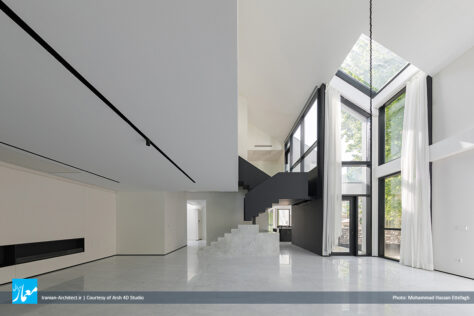
در نمای بیرونی، زمین، دیوارها و سقف به هم دوخته شدهاند تا حجمی خالص ایجاد کنند. این لایه تیره از جنس آجر خاکستری که بیرون ساختمان را میپوشاند، لایه سفید داخلی از جنس گچ و سیمان سفید (لایه حیات و زندگی) را در برمیگیرد و حفظ میکند. در فضای داخلی، گچ سفید با کابینت تیره و یک راهپله فولادی معلق در کنار هم قرار گرفتهاند، و در بسیاری از قسمتها، این لایه سفید از طریق گشودگیهایی مجسمهگونه، در حجم نیز دیده میشود.
Ashianeh Villa
Arsh 4D Studio (Alireza Sherafati, Pantea Eslami, Shabnam Azmoodeh)
Location: Lavasan, ehran, Iran
Date: 2021
Area: 720 sqm
Status: Compeleted
Client: Private Sector
Design Team: Razieh Shoaei, Negar Saadat, Shiva Sabzevari, Hamed Naji
Structure: Ali Sheikhi
Mechanical Engineering: Ali Ghanizadeh
Electrical Engineering: Ali Piltan
Construction: Raahro Design Studio
Graphic: Mahsa Shabestani Pour
Photo: Mohammad Hassan Ettefagh
The project is situated in Lavasan, a suburban area of Tehran, known for having an excellent weather and high-end villas. The clients had lived on the same site for the past few decades, before deciding to replace their old house with a modern and more architecturally sophisticated villa. Therefore, memory and place attachment played an important role in the design process.
Certain elements in the site were emotionally significant to the clients. The new design preserved the pool as one of the evocative elements that carried fond childhood memories for the clients, who are grown-up adults now. The property wall which is made of local stone, was another significant element, that was preserved as a reminisce of the time, when Lavasan was a small village.
The project follows the overall building mass of the old villa, and while occupying roughly the same volume, is elegantly simple and minimalist in style. The two-level gable roof of the old building is replaced with a continuous double pitched roof in the new project. Several projections, setbacks, and gaps along the elevation create a sophisticatedly sculpted form. The large windows along the backyard façade invite water and Lavasan’s lush nature inside. The glazed opening continues along the ground floor, forming a transparent level, and making the upper floor to look almost suspended.
The main exterior materials are white cement and black fire brick. They are juxtaposed as if the black layer is a shell that protects the house and its inhabitants, and is peeled off in some areas, to expose the softer white pulp inside. The fire brick moves along different surfaces; at some parts, covering the floors, at others, forming the exterior cladding, and also acting as the final roof material.

